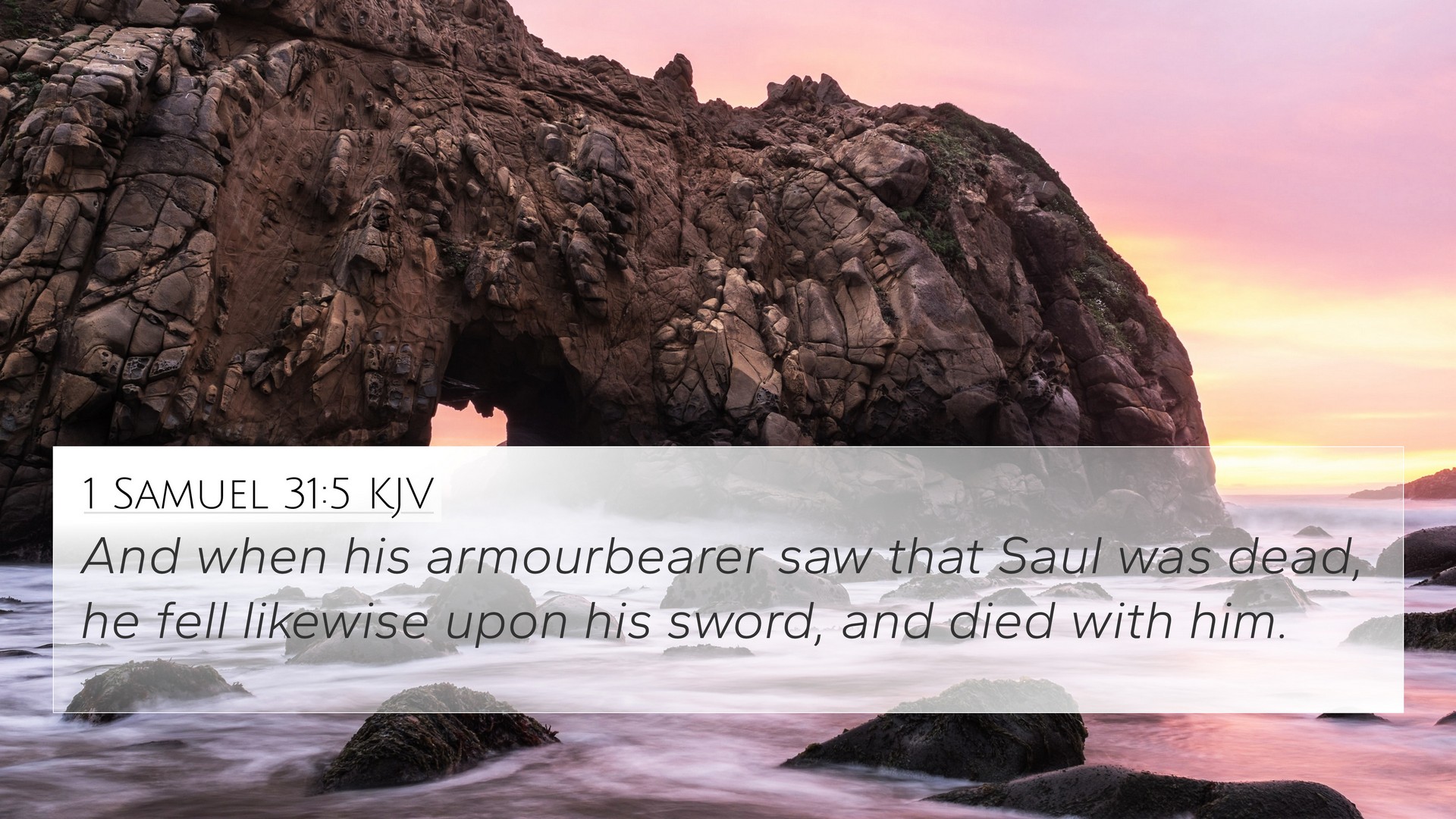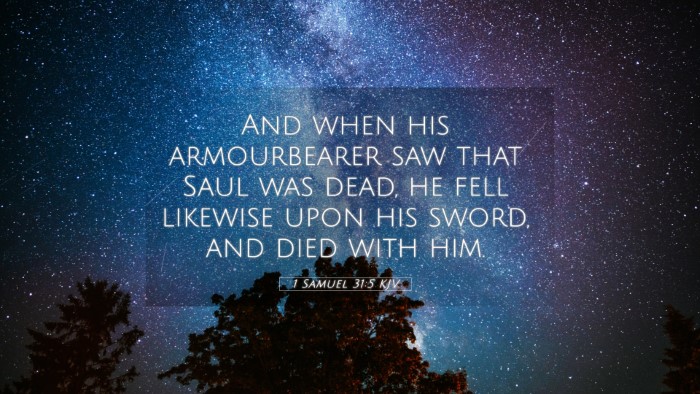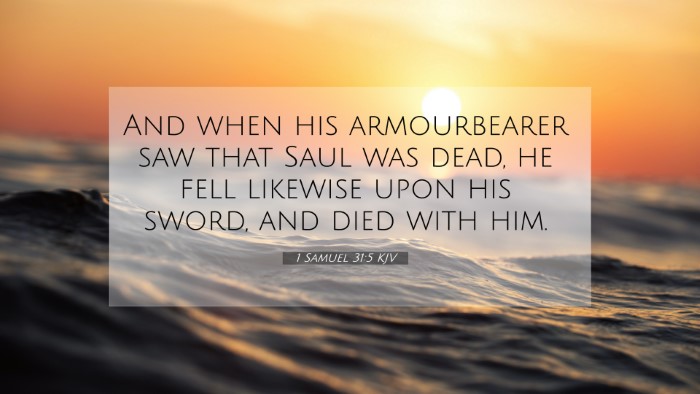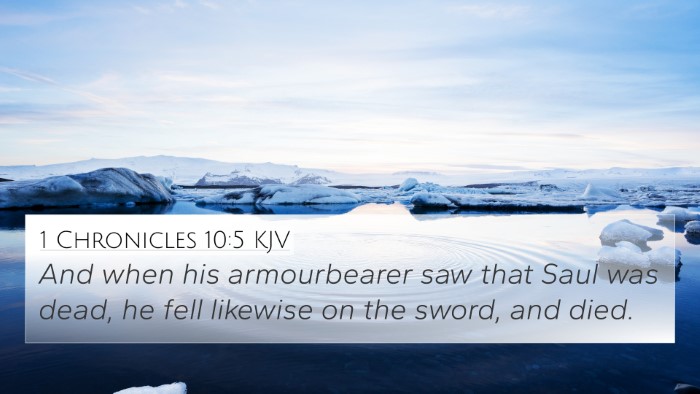Understanding 1 Samuel 31:5
1 Samuel 31:5 states: "And when his armor-bearer saw that Saul was dead, he fell upon his sword, and died with him." This poignant verse captures the tragic conclusion of King Saul's life and reign, marking a significant moment in Israel's history.
Contextual Overview
This passage occurs at the end of the first book of Samuel, after a catastrophic battle with the Philistines where Saul faces defeat. The verse signifies the deep loyalty of the armor-bearer to Saul, reflecting themes of honor, tragedy, and the complexities of leadership.
Commentary Insights
- Matthew Henry: Henry highlights the despair and desperation of the armor-bearer. He emphasizes that the act of suicide indicates not only loyalty but also a profound sense of hopelessness in the face of defeat. He notes this illustrates the tragic consequences of sin and the importance of right leadership.
- Albert Barnes: Barnes explains that the armor-bearer's action reflects the culture of the time where defeat in battle was synonymous with dishonor. He comments on the brutal reality of warfare in ancient times and the value placed on honor over life.
- Adam Clarke: Clarke focuses on the motivations behind the armor-bearer's actions, suggesting that he chose to die alongside Saul rather than face capture or indictment for failure. He draws parallels to other instances in Scripture where loyalty leads to death, emphasizing the moral complexities in the narrative.
Thematic Connections
This verse serves as a reflection of several intertwined themes present throughout the Bible:
- Loyalty and Honor: The armor-bearer's choice represents the ultimate loyalty to his king, even in death.
- Despair in Defeat: The act of suicide highlights the despair that can follow overwhelming failure and loss.
- Moral Complexity: The relationship dynamics between a leader and his supporters can lead to tragic outcomes.
Cross-References
To deepen the understanding of 1 Samuel 31:5, the following cross-references are valuable:
- 1 Samuel 10:1: Saul's anointing as king signifies the beginning of his tumultuous journey.
- 1 Samuel 15:26-29: The rejection of Saul by God illustrates the downfall that leads to despair.
- 2 Samuel 1:6-10: This passage recounts the death of Saul and the implications of his death for Israel.
- Matthew 27:5: Judas Iscariot’s suicide parallels the despair seen in Saul's armor-bearer during a moment of defeat.
- Job 3:11-12: Job’s wish for death in the face of suffering resonates with the despair reflected here.
- Romans 8:38-39: While contrasting redemption, it highlights the severe lengths individuals might go to when feeling separated from hope.
- Psalms 31:13: This verse sheds light on the feelings of betrayal and hopelessness that can lead to despair.
Conclusion
In conclusion, 1 Samuel 31:5 encapsulates profound emotions and themes that resonate throughout Scripture. The loyalty of the armor-bearer, the moral complexities of leadership, and the tragic nature of despair serve as a potent reminder of the ties between honor and sacrifice. Understanding this verse through the lens of cross-referencing other biblical texts reveals a broader narrative of divine sovereignty, human struggle, and redemption.



